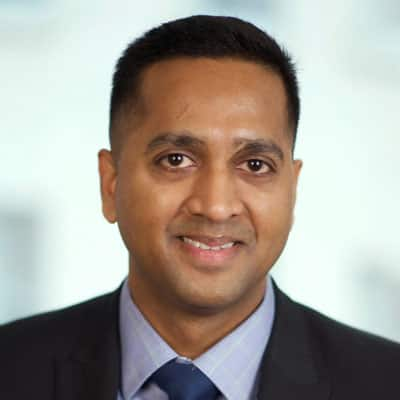Future-proofing technology and operations for corporate actions
The COVID-19 pandemic has had a seismic impact on the world of corporate actions operations. On the one hand, it spurred an explosion of dividend suspensions and heavy trading volumes, as well as near-record capital markets activity and IPOs. On the other hand, lockdowns forced data teams to manage the complexities of these higher volumes while working remotely.
In response, financial institutions are accelerating plans to modernize their corporate actions systems and technology. By shifting to automation and managed services, many firms hope to regain a crucial ability to focus on their core competencies. With new urgency, firms are compressing their existing three or four-year roadmaps for modernization down to 12 or 18 months. The ultimate goal: To "future-proof" technology and operations to adapt to whatever unexpected events may wait down the road.
During a recent panel discussion, IHS Markit experts joined other industry leaders from Goldman Sachs and Morgan Stanley to explore what is driving corporate actions modernization.
This discussion generated four key takeaways.
1. Scalability at all costs
Amid the rapid growth of corporate actions data volume, firms are increasingly seeking technology platforms that enable them to scale quickly. Moreover, after facing the challenges from the pandemic, they are more willing to absorb setup costs to do so.
"Our top priority is moving our operations onto a platform that allows us to be much more nimble and scalable," said Julie Leigh, Managing Director, Head of Global Asset Servicing & Head of EMEA Security Services at Morgan Stanley. "Cost will always matter, but we've got so many other things that we need to focus on that it's not number one for us."
2. Higher volumes bring higher risk
The corporate actions space is becoming more challenging across the board. Clients increasingly are seeking bespoke solutions that outdated legacy technology cannot easily handle. At the same, higher volumes of more intricate corporate actions add another level of risk to the equation.
"Even if your percentage of errors remains the same, the absolute value of errors goes up with the higher volume," Lukas Wong, Goldman Sachs' Vice President of EMEA Prime Micro Trading, noted. To address this growing complexity and the risk that comes with it, firms need data-driven solutions that can not only get the data quickly but also "interpret it in a smart way," Wong added. "This is the next phase from a risk perspective."
3. Solving the data silo challenge
The modernization of corporate actions operations often impacts several legacy systems, not one. Many firms' technology systems have evolved inorganically over the years, incorporating multiple programs and platforms across the front and back offices that do not interact efficiently. As firms work to upgrade and improve their systems, they increasingly are focused on removing the data silos that have proliferated with this setup so that information can move freely and automatically across the enterprise.
However, straight-through processing automation in asset servicing operations remains elusive for many firms, due to disparate systems and multiple interfaces from vendors, brokers, custodians, and many third-party systems. And several firms still struggle to design systems that truly offer front-to-back integration.
4. Finding deep expertise
While automation and technology are critical parts of modernization, the human capital element remains crucial. Subject-matter expertise has become even more critical as corporate actions have grown in complexity. At the same time, however, a talent shortage and remote work environments have made hiring and training new experts more difficult.
"The requirement for deep subject-matter experts will only remain and will grow," Goldman Sachs' Wong noted. "You can remove a certain percentage of the repeatable legwork using technology — maybe 80% or 90%. But there's always something that will trip up the market, and that is often where opportunities and challenges lie."
Where do we go from here?
As firms seek to address these and other challenges in corporate actions, many are turning to outsourced solutions in the form of managed services. In doing so, they are seeking:
- A gold-standard solution that can offer the automation capabilities to streamline their workflows.
- The technological capabilities to mesh disparate systems into an integrated front-to-back solution.
- A deep pool of industry expertise that can handle a constantly changing landscape.
Cloud-based and SaaS platforms are already playing a greater role in the corporate actions space, widening the availability of cutting-edge technologies. Smalland medium-sized asset managers have been able to narrow the competitive gap with their larger rivals by stitching together best-in-breed SaaS solutions that improve service and efficiency.
However, experts agree that weare yet to see the full benefits of this shift among all of the largest legacy players.
"It's not just about taking a legacy solution and moving it to the cloud," Leigh noted. "We also need to think differently. We need to take a step back and look at some of the complexity around processes, the infrastructure, and the architecture. I think that's when we'll start to see some of the true benefits of those solutions coming through."
While still a work in progress, corporate action leaders are broadly optimistic that momentum is building to drive better integrated and more efficient automated processes.
"After the past 20-plus years of dealing with manual processes and legacy systems, this is the time for a change," Leigh said. "We still need to tell the story, and we need to make sure we get the funding to make the change. But the momentum is there."
S&P Global provides industry-leading data, software and technology platforms and managed services to tackle some of the most difficult challenges in financial markets. We help our customers better understand complicated markets, reduce risk, operate more efficiently and comply with financial regulation.
This article was published by S&P Global Market Intelligence and not by S&P Global Ratings, which is a separately managed division of S&P Global.

